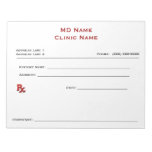A business plan: Are you working towards a specific goal?
As physicians are increasingly focusing on their personal finances, including the worthy goals of debt reduction and wealth accumulation for early retirement, many are failing to plan to make sure the business cashflow to fund those plans is there. What I continually see is that doctors are working as hard as they can to run their businesses and make as much money as possible for their family and retirement but lack specific benchmarks, goals, or plans to actually achieve those goals.
We’ve previously discussed the value of a business plan and how vital it is in hard times, but it’s equally important when things are good. You should have a good understanding of how much you are making, how much of that you are keeping, and a plan to maintain or increase your success. Details include marketing, cashflow, purchasing, hiring, onboarding providers/partners, and even your eventual exit strategy. When you hit that magic retirement savings number, will your practice be an additional, salable asset? It can be if you plan to make it one.
Upgrade your business insurance: How well is your cash cow protected?
I teach a whole national CME course on medical practice risk management that includes a very specific list of specialty commercial insurance coverage. Many doctors have the basics like a medical malpractice policy, some life and disability coverage, and some liability insurance for the office, but that just scratches the surface. Any competent asset protection plan for a practice owner should cover all the predictable exposures you are legally responsible for, including data breaches, premises liability including acts of violence and mass shootings, employee lawsuits, executive and fiduciary liability, payer audits and business interruption, and loss of all kinds, as just a few examples.
I continually discover that doctors are either un-insured or under-insured against these common risks, for example, having only low-limit “riders” of $50K for data and cyber liability as an add-on to their med-mal policy rather than a stand-alone policy with separate, seven figure limits. This means you need to take the time to sit down with an experienced, multi-line commercial insurance agent and understand exactly what is covered, for how much, and if that coverage is shared with any other policy. My thoughts on liability insurance as an attorney are best summarized as follows:
It’s the best, cheapest first line of defense and an indispensable, non-negotiable business expense.
Insurance works best like a bullet-proof vest; it’s a system of many layers. Buy all the right kinds of insurance in the right amount, until it hurts.
It is vital, but incomplete on its own, so always have a good back-up plan for claims that are uncovered or are above your limits.
Review your business documents. Are they complete, available, and up to date?
Does your business have all the required formal legal documents and structure it should? If your answer is yes, are they stored and managed in a way and place that they are easily accessible to yourself and others if you are unavailable? We often see a panicked “search and rescue” operation during an emergency, after a death, when a key employee leaves or is terminated, etc. This list is complex and fact-specific, but here are some of the most basic items you should be able to lay hands on at any given time:
- Corporate formation documents, including articles of incorporation and corresponding operating agreements, buy-sell agreements, licenses, permits, corporate retirement plan records. etc.
- All insurance policies
- Tax records and returns
- Bank records
- A professionally drafted, state-specific employment manual
- Business contracts, both internal and with third parties and corresponding invoices for a reasonable period of time
This assumes that these documents are adequately drafted by professionals and that they have been regularly reviewed and updated to meet the practices actual form and needs, another commonly overlooked planning issue. The best documents and insurance policies, no matter how well they were originally drafted, can be a latent source of liability if they are out of date.
15% Off All Business Cards
VIEW ALL
$60.05
$60.05

$44.25
$44.25
$58.55
$68.95
$65.40


















